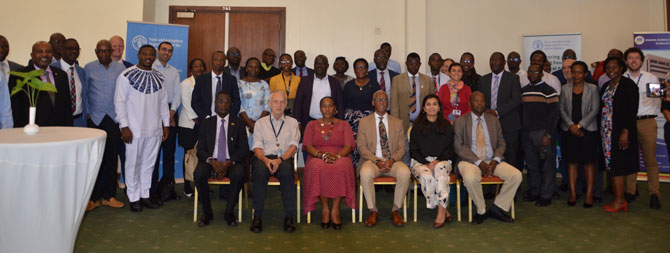New agrifood economics findings help Uganda prioritize agriculture investments in districts with untapped socioeconomic potential

The Agrifood Economics Division of the Food and Agriculture Organization of the United Nations (FAO), together with the Government of Uganda, have unveiled a package of economic reports to policymakers in Kampala in efforts to prioritize and repurpose future investments in agriculture for post-COVID-19 economic recovery with poverty reduction.
The first of the three studies identified agrifood sectors where public investment has the most across-the-board positive impact on economic growth and poverty reduction. Drawing on this, the second study zoomed in to determine the districts where those high-impact agrifood sectors have the most potential for production (yields) and poverty reduction, and the third paper analysed what type of investment specifically is needed for the sectors identified and districts pinpointed.
In the first study, titled Productive public investment in agriculture for economic recovery with rural well-being: an analysis of prospective scenarios for Uganda, the impact of increasing public investment in agrifood sectors in Uganda was assessed across five “score-point categories” including private consumption, total gross domestic product (GDP) and agrifood GDP, poverty reduction and export growth. We found that the sugar cane sector leads the ranking, coming top for the first three categories. However, for poverty reduction, cassava and potato take the lead, while banana also ranks high. For export growth, tea, coffee, cocoa, and vanilla are out in front, but the impact on other private consumption, GDP or poverty reduction, is more modest.
To pinpoint areas where investments are likely to have big impacts in terms of both agricultural growth and poverty reduction, the second report A tool to support the spatial prioritization of commodity-specific investments – An application to Uganda, combined a set of spatial data to locate, for each prioritized agrifood sector, districts with strong agricultural potential, large productivity gaps, and high incidence of poverty (the equivalent to poverty reduction potential). The new methodology used allows to geographically rank districts in the central, eastern, northern, and western regions of Uganda for investments in high-impact agrifood sectors.
Using those reports as a base, and through stakeholder and government consultations, the forthcoming third study selected five districts and their respective high-impact agrifood sector for an in-depth assessment of the most pressing investments. As part of that holistic assessment, focus-group discussions were organized in Lira for cassava (northern region), in Masaka for coffee (central region); Kibaale for goats (western region), Serere for maize (eastern region) and Soroti for millet (eastern region).
“This suite of economic reports that we are sharing with the Government of Uganda today is a major milestone in helping the country to prioritize its investments in agriculture for better returns on investment in untapped production potential, the economy at large, and poverty reduction”, said Marco V. Sánchez, Deputy Director of the Agrifood Economics Division at FAO. “For the first time, there is now solid, data-driven evidence at commodity-district level of where and what to invest in”, added Sánchez during the launch event in Kampala.
This portfolio of work of economic analyses and repurposing agrifood investments was carried out by the FAO Monitoring and Analysing Food and Agricultural Policies (MAFAP) programme.
Going forward, the data-driven policymaking evidence will inform the Government of Uganda’s decisions in prioritizing investments in agriculture as part of the implementation of, among others, the Third National Development Plan (NPDIII) and in alignment with the delivery approach promoted under the Parish Development Model. The findings can also guide the lending portfolios of national and international financial institutions in Uganda, as well as investment proposals under FAO’s Hand-in-Hand Initiative.
Read the full story here.

